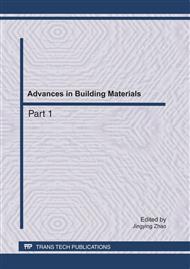p.524
p.529
p.533
p.537
p.545
p.551
p.555
p.561
p.566
Experimental Study to Calibrate Monotonic Micromechanics-Based Fracture Models of Q345 Steel
Abstract:
Micromechanics-based facture models have been proved to predict ductile fracture in steel structures with good accuracy. The stress modified critical strain (SMCS) model and the void growth model (VGM) are suitable to predict fracture initiation under monotonic loading. In order to calibrate the parameters in these models for the largely used Q345 steel in China, material tests, scanning electron microscope tests and finite element analyses were conducted. The test specimens were made from base metal, deposit metal and heat affected zone of Q345 steel to investigate crack initiation in welded connections. The results of this paper can be applied to predict ductile fracture in welded steel connections under monotonic loading.
Info:
Periodical:
Pages:
545-550
Citation:
Online since:
May 2011
Authors:
Price:
Сopyright:
© 2011 Trans Tech Publications Ltd. All Rights Reserved
Share:
Citation:


